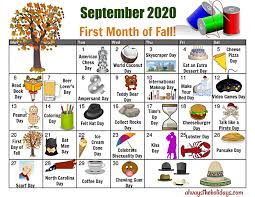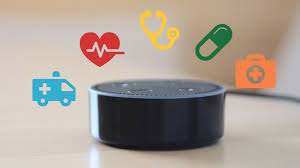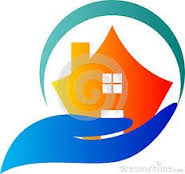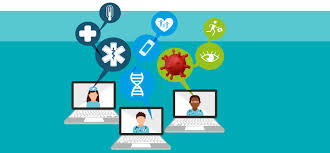 The boomer-and-beyond market has caught the eye of the tech industry. As a busy September wound down, new announcements in the voice first category were of particular interest. These include GreatCall’s new Lively Flip phone with voice services and the announcement that Amazon’s Alexa has added 80,000 answers to healthcare questions through a partnership with Digital Health company Sharecare. And on 9/24 Amazon announced CareHub, a way to monitor family members from afar. As if that weren’t enough, a tech track at Argentum’s annual (now virtual) conference included a session on Voice First (with aRyan Elz and Nick Patel, sponsored by CDW Healthcare) in a long list of tech enablement session entries. Also at Argentum, existing tech players added features for Covid-19 and more. Finally, a new report details access limitations and disparate costs for high speed Internet across the US. Here are five other posts:
The boomer-and-beyond market has caught the eye of the tech industry. As a busy September wound down, new announcements in the voice first category were of particular interest. These include GreatCall’s new Lively Flip phone with voice services and the announcement that Amazon’s Alexa has added 80,000 answers to healthcare questions through a partnership with Digital Health company Sharecare. And on 9/24 Amazon announced CareHub, a way to monitor family members from afar. As if that weren’t enough, a tech track at Argentum’s annual (now virtual) conference included a session on Voice First (with aRyan Elz and Nick Patel, sponsored by CDW Healthcare) in a long list of tech enablement session entries. Also at Argentum, existing tech players added features for Covid-19 and more. Finally, a new report details access limitations and disparate costs for high speed Internet across the US. Here are five other posts:
Will telehealth help the oldest adults during Covid-19? What happens when people avoid health-related in-person care? Nearly a third of older adults, according to a National Council on Aging post, are foregoing visits to emergency rooms, afraid of catching the virus. Or they are avoiding outpatient visits, afraid of Covid-19, but also concerned about cost of care. And the cumulative number of lost visits since mid-March continues to grow. Family concerns about health and Covid-19 also continue to delay or prevent some move-ins to senior living communities. Presumably, some avoidance is occurring even in circumstances where there is a pressing need for a move, such as worsening dementia. But is telehealth viable for the oldest? Read more.
Five offerings from the Rock Health Aging in Place report. Venture interest in Aging in Place – is it a turning point? RockHealth, the “first venture fund dedicated to digital health”, has declared this year a turning point in the market of offerings for older adults (aka baby boomers, particularly those 65+). In their September, 2020 Aging in Place report, the authors note that demographics, regulatory and policy changes (aka reimbursement via Medicare Advantage plans), and Covid-19’s boosted use of digital health combine to make this a pivotal point. The oldest baby boomer, it should be mentioned, is 74 now, but the youngest is 56 and may have aging parents who could benefit, depending on health status, from these five offerings from that report. Read more.
Pendant medical alerts evolve – and will disappear. Surprise (maybe) – Philips puts Lifeline business up for auction. How do I know this? Not from any news article other than PERS Insider, a newly created newsletter for those who track the medical alert industry. Probably given the Q1 profit drop, they had to do something about the steep revenue decline of their Personal Health businesses. You may not remember that Philips acquired the Lifeline business in 2006 for $750 million. What did they get for that investment? The leader in the “Medical Alert/Medical Alarm/PERS space.” You pick the term -- or let the search engine do it in order to show you each paid ad after paid ad. Read more.
Agin in place – the latest trend. Rant on. People want to age in place – just ask them, as AARP did in 2018. Of course, in the not-cited part of that survey, only 59% expected to be able to do so. Little did they know that a pandemic was coming, that visiting with aging family would become a nightmare – with people unable to see their relatives for many months. The death rates from Covid-19 (or with Covid-19) of seniors in nursing homes and assisted living were horrific on the one hand and daunting to prospective move-ins. So by late 2020, EVERYBODY wants to age in place – an unprecedented trend, says Rock Health – and health innovators have taken note. Read more.
Technologies from the Argentum 2020 Virtual Conference and Suppliers. It’s been an interesting technology week. New announcements in the voice first category were of particular interest. These include GreatCall’s new Lively Flip phone with voice services and the announcement that Amazon’s Alexa has added 80,000 answers to healthcare questions through a partnership with Digital Health company Sharecare. And today (9/24) it announced CareHub, a way to monitor family members from afar.As if that weren’t enough, a tech track at Argentum’s annual (now virtual) conference included a session on Voice First (with Ryan Elza and Nick Patel, sponsored by CDW Healthcare) in a long list of tech enablement session entries. Also on the Argentum site is a product category listing. Read more.
Recent press quotes:
New York Times: In Isolating Times, Can Robo-Pets Provide Comfort, September, 2020
Kiplinger: High Tech Aids for Aging in Place, September, 2020
Senior Housing News: Senior Living Tech Spending Skyrockets, September, 2020
from Tips For Aging In Place https://www.ageinplacetech.com/blog/five-aging-and-health-technology-blog-posts-september-2020
 It’s been an interesting technology week
It’s been an interesting technology week Aging in place – the latest trend. Rant on. People want to age in place – just ask them, as
Aging in place – the latest trend. Rant on. People want to age in place – just ask them, as  Surprise (maybe) – Philips puts Lifeline business up for auction. How do I know this? Not from any news article other than
Surprise (maybe) – Philips puts Lifeline business up for auction. How do I know this? Not from any news article other than  Venture interest in Aging in Place – is it a turning point?
Venture interest in Aging in Place – is it a turning point?  What happens when people avoid health-related in-person care? Nearly a third of older adults, according to a
What happens when people avoid health-related in-person care? Nearly a third of older adults, according to a  August in the time of Covid-19.
August in the time of Covid-19.